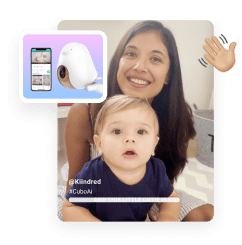The 4 things you need to know about treating babies for burns and scalds
Children are naturally curious and they learn through play and exploring the world around them. This is a wonderful way to grow and develop, however, the problem is that small children lack the ability to understand danger and consequence.
For example, investigating the hot cup of tea you just left on the coffee table will most likely not end well. Equally fascinating is the way you straighten your hair with something that looks like a magic wand. Children always want to mimic what we do as grown-ups, just preferably not with hair straighteners that are over 180 degrees Celsius in temperature.
Scalds from hot liquids are the most common burns in small children. Other causes include touching ovens, heaters, pots and pans – all common household objects.
Children’s skin burns at a lower temperature than an adult’s, so a hot cup of tea with milk that wouldn’t burn a grown up’s skin may cause a severe burn in a child. We are leathery old crocodiles in comparison to kids!
Here’s what you need to do to treat a burn in a child:
The most important First Aid treatment for burns is to cool the affected area. You need to place the burned area under cold running tap water for a minimum of twenty minutes. This can feel like an eternity with a screaming toddler, but it takes that long to be effective. Ten or even fifteen minutes just isn’t long enough to stop the burning process.
The Centre for Children’s Burns and Trauma Research has summarised the First Aid treatment for burns into four simple steps:
Get tailored content based on your week of pregnancy
By signing up, you agree to receiving our Newsletters. Cancel anytime.



1. Remove
Remove any clothing and jewellery from the burned area as soon as possible. If clothing is stuck to the skin, do not remove it and do not pop any blisters. It is important to remove clothing and jewellery because they can trap heat onto the skin and can restrict blood flow to the area if it starts to swell. Make sure you also remove the nappy – they are very absorbent and retain heat.
Related Articles
2. Cool
Run cool running water over the burned area (e.g. from a cold tap in the kitchen sink or bathroom shower) for twenty minutes. During this time, only apply the water to the burned area. Keep the child’s unburned areas warm – they can get cold very quickly.
3. Cover
Use cling wrap or a non-stick dressing from your first aid kit to cover and protect the burned area. Do not use ice, creams, oil or other substances. They will not help the wound to heal and they may cause infection or more damage. They will also interfere with an examination by the doctor.
4. Seek
Seek medical attention for all children’s burns by calling the ambulance or going to hospital. We don’t want their skin to scar — scars don’t grow and kids have lots of growing to do. Children can also lose a lot of fluid through a burn.
When it comes to burns, prevention is always better than cure. Keep those hot drinks and hair straighteners out of reach, teach your children that Hot = Danger, and most importantly, if your child is burned, remember the twenty minutes of cool running water – this can still be effective up to 3 hours after the burn has occurred!
References: Burns Registry of Australia and New Zealand (BRANZ) 2015 report Kidsafe Victoria Management of Burns: The Royal Children’s Hospital Melbourne Centre for Burns and Trauma Research

Sarah Hunstead Follow +
Sarah Hunstead started CPR Kids because as a paediatric nurse knows that what a parent or carer does to help their sick or injured child in the minutes before an ambulance arrives, can directly impact the health outcome of their child. Sarah realised that a little knowledge, and confidence to act, could make all the difference. So Sarah set out to empower every adult to be...




